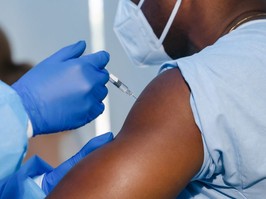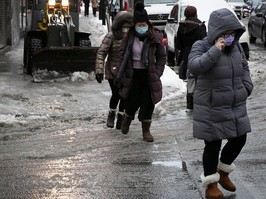one of the frontrunners in the covid-19 vaccine race phase 3 trials has been given the all clear to restart after it was put on pause to investigate a potential adverse reaction in a participant.while unconfirmed, astrazeneca had told investors a female trial participant from the u.k. had developed neurological symptoms consistent with
transverse myelitis, a rare, but serious, spinal inflammatory disorder. her status has not been officially disclosed but last week, it was reported she was
recovering and would soon be discharged from the hospital this week.the pause in the trial gave astrazeneca’s independent experts time to conduct a safety investigation to prove whether the case of transverse myelitis was coincidental or caused by the vaccine. the u.k. committee has concluded its investigations and recommended that trials are safe to the medicines health regulatory authority, the u.k. equivalent of the food and drug administration or health canada.“astrazeneca and the university of oxford, as the trial sponsor, cannot disclose further medical information. all trial investigators and participants will be updated with the relevant information and this will be disclosed on global clinical registries, according to the clinical trial and regulatory standards,” according to
the statement.astrazeneca’s halt has not affected trials from other vaccine makers.all phase 3 trials of the vaccine, developed by the university of oxford and british-swedish pharma company astra-zeneca, were put on hold. t
he trial had intended to enrol about 30,000 participants across the u.s.. in the
phase 1 and 2 trial of the same vaccine, approximately 60 per cent of people experienced mild to moderate side effects such as headaches, fever, or some discomfort at the site of injection. however, there were no serious adverse events, and all side effects subsided.news of the halted trials comes on the same day that
nine vaccine companies pledged to only seek approval of the vaccine once it was proven safe and effective, instead of bowing to political pressure. the companies were responding to u.s. president donald trump’s attempts to
bully the food and drug administration into approving a vaccine before the november election.pauses are not uncommon in trials that include tens of thousands of participants. the move is also an important sign that protocols are being followed to maintain safety.“out of an abundance of caution, they decided to pause things, investigate, and then move forward,” says
dr. barry pakes, assistant professor at the dalla lana school of public health and program director of the public health and preventive medicine specialty training program. “i think it helps communicate to the public what kind of systems are in place and the processes in place to ensure the highest standards of safety are working.”
how fast is too fast?
the speed at which a vaccine can be developed has been an important discussion since covid-19 began. and while the turmoil the virus has thrown the world into has heightened the sense of urgency, vaccines typically take years to produce. the mumps vaccine was the fastest vaccine ever to be approved — and that took four years, from collecting viral samples in 1964 to licensing in 1967.however, like the smallpox and polio vaccines and others of that era, the mumps vaccine took the traditional approach of using a weakened form of the live virus to induce the body’s immune response.the vaccine to combat the novel coronavirus will likely not look like this because newer platforms — the method many researchers are using to base the vaccine on — allow production to be scaled faster. creating a vaccine through the traditional way of growing viruses in cells and killing them off with a chemical to inactivate them requires large quantities of the virus, which takes time and makes it harder to scale production.
here are just some of the new platforms that are currently being used in other covid-19 vaccine trials:genetic vaccines use the virus’ genes to stimulate the body’s immune response. the body never actually has to encounter the whole virus, just some viral proteins. the vaccines in the
moderna and
pfizer trials are using these methods.
viral vector vaccines are similar to genetic vaccines in using the novel coronavirus’s genes to provoke an immune response, but uses live viruses to carry dna into the human cells to elicit an immune response.. this is the method used in the
cansinobio and
gamaleya vaccines as well as the oxford/astrazeneca vaccine currently on hold.
the astrazeneca vaccine uses a chimpanzee virus — based on technology developed by oxford university — to deliver the proteins on the outside of the sars-cov-2 virus that causes covid-19. this virus cannot duplicate in humans.protein-based vaccines use the coronavirus proteins (the crown of protein spikes around sars-cov-2 which give it the “corona” name) to provoke an immune response. this method is currently used in
vaxine,
sanofi pasteur, and
novavax vaccines.
dduong@postmedia.com | @dianaduodon’t miss the latest on covid-19, reopening and life. subscribe to healthing’s daily newsletter coming out of covid.
 4 minute read
4 minute read








